
The boogeyman lives again.
The newest “Halloween” movie, set to hit theaters in October, is technically the 11th movie to belong to the 40-year-old horror franchise, which spawned Michael Myers and popularized slasher escapades. But the ever-ballooning folklore surrounding Haddonfield, Illinois, and its infamous masked murderer are irrelevant this time around. David Gordon Green, who directed the film based on a script he wrote with longtime pals Danny McBride and Jeff Fradley, stripped away the sequels’ intervening mythology, rendering his “Halloween” a direct companion to John Carpenter’s 1978 classic.
That means, according to Green’s rendition, Michael never chased Laurie Strode (Jamie Lee Curtis) down hospital halls, nor did he kill her on the roof of the mental asylum where she awaited his return. If you hadn’t already, you can officially dismiss the demented Dickensian gore-fest that Rob Zombie unleashed in his tedious 2007 remake and its hyper-violent 2009 sequel.
Instead, this is the story of Laurie ― a role Curtis agreed to reprise because Jake Gyllenhaal, of all people, convinced her to do so ― reclaiming a life of victimhood. “I think I’ve quietly made a very feminist horror movie,” Green told me.
For Green, who has a visceral connection to the original “Halloween,” arriving at this moment was serendipitous. After a failed attempt to revamp the Italian horror fantasia “Suspiria,” which his friend Luca Guadagnino (“Call Me by Your Name”) went on to do instead, Green had been longing to get his hands on a crowd-pleasing thriller. And then, with one simple email from superstar producer Jason Blum, “Halloween” entered his life.
About a month before the movie’s Sept. 8 midnight premiere at the Toronto International Film Festival, the 43-year-old director stopped by HuffPost’s offices to chat about all things “Halloween.” Green has made soft indies (“All the Real Girls,” “Snow Angels”), stylistic actor vehicles (“Joe,” “Stronger”) and rowdy studio comedies (“Pineapple Express, “Your Highness”) alike, so at this point almost anything he does constitutes something of a departure. I’m hard-pressed to think of a living director whose career has pivoted this significantly ― precisely the upgrade Michael Myers needed.
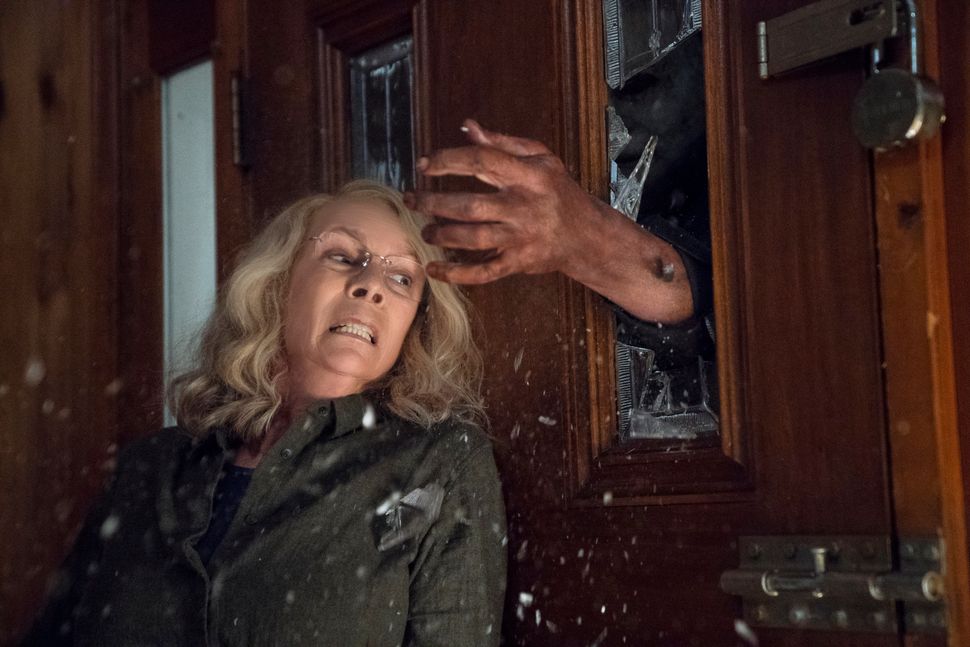
What’s your earliest memory of “Halloween”?
There were two films that were forbidden fruit in my youth. My parents were very strict, and I was a movie junkie. But I was not allowed to see R-rated movies. They started loosening up when I was maybe 13 or 14, but I wanted to see “Revenge of the Nerds” and “Halloween” really badly. They were both circulating in my world around 1985, so fifth or sixth grade. There were a couple friends of mine whose parents were not so strict about things, and I remember watching it against my parents’ wishes at a sleepover party. I was so scared I got ill, vomited, called my mom to come get me and confessed.
So it is full circle now that I will not allow my mom to watch this movie.
By the time you’re watching “Halloween” in 1985, we’d gotten “Friday the 13th,” “Nightmare on Elm Street,” “Texas Chain Saw Massacre,” “Prom Night” and some of their many sequels. Was “Halloween” your slasher flick of choice?
I liked “Halloween,” and “Nightmare on Elm Street” ― those weren’t as scary because they were fun. Freddy Krueger was such a charismatic, strange, villainous character that it took the tension out. What scared me about Michael Myers is that he doesn’t give you anything. He has no personality, he has no ambition, he has no motivation — or very little. He’s just this primal essence of evil, and it doesn’t give you something to be afraid of because it’s everything. A guy in my dreams with a burnt-up face and Edward Scissorhands gloves is scary because it’s shocking, but Michael Myers got into my subconscious in a way I did not appreciate as a child.
There’s a lot of ways you can go with a horror movie, and they made “Scream” as a result of the success of these movies. But I tried to take the DNA that Carpenter created in 1978. When we went to him with that concept, he got really excited, and we’ve been working together for the last year and a half on that.
After being haunted by Michael as a preteen, what do you make of the sequels?
I enjoy all of them as a fan who likes to watch Michael Myers and likes that music. They don’t scare me. Some of them are gross, some of them are very creative. They get really complicated in terms of the mythology, which is why in our version we dismissed that as legend and myth and the evolution of a town’s conversation about Michael Myers. We just stick to the simplicity of “Halloween 1.” We’re a very easy to process and digest movie. It’s just, “A bad thing happened 40 years ago; ready for some more?”
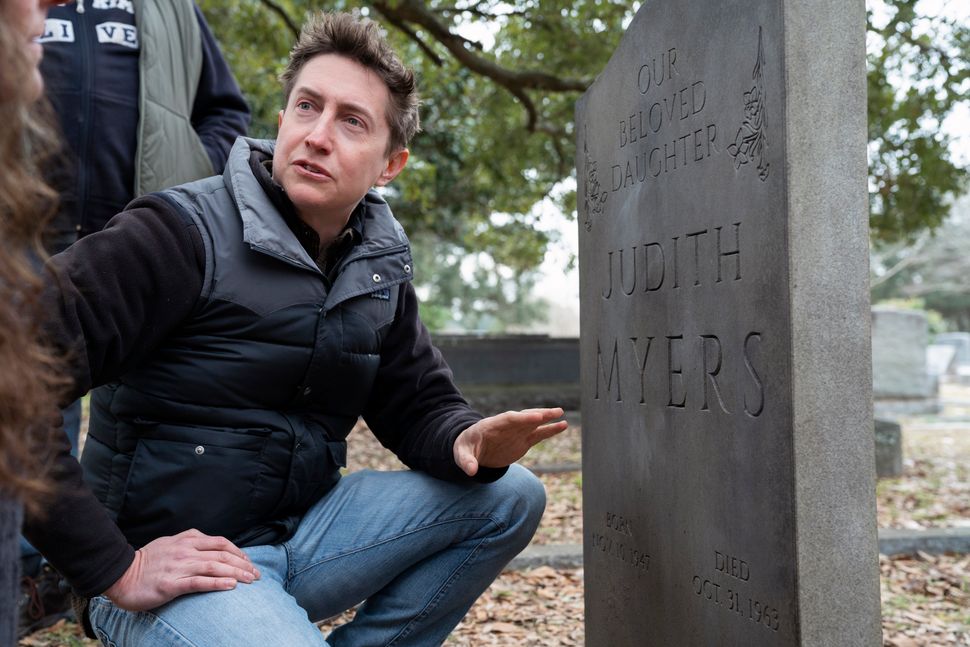
How did you enter the picture for this movie?
I was in Los Angeles to show a cut of the movie “Stronger” to the producers. I’d known [horror producer] Jason Blum socially, and I woke up to an email in my hotel from Jason saying, “Interested in the ‘Halloween’ franchise? Call me.” And my reaction was very similar to my reaction in high places, where my legs feel weird. You know when you’re looking off the edge of a building or bridge and your legs get a little wobbly? I was sitting down looking out my hotel room window and my legs were getting wobbly. I had a very physical reaction to that email.
Because you’re thinking of getting your hands on this movie that meant so much to you.
Absolutely, and I’d wanted to make a horror movie for a long time.
Had you come close?
Yeah, me and Luca Guadagnino developed “Suspiria.” I wrote one of the drafts. I was going to direct it at one point, right after “Pineapple Express.” I met him at a film festival and we just became fast friends. I wrote it with my production sound mixer, Chris Gebert, who’s the only person who’s worked on all my movies. We’re big horror nerds, so we wrote a remake of it. But it was a big-budget horror movie at a time when the “Paranormal Activity” movies and other micro found-footage moves were defining horror. Nobody wanted to make my $20 million elegant opera of a horror film. So that went, and then Luca decided to do it himself. It’s so funny that we’re coming out around the same time. I told him that last week.
It’s a great connection, especially since Carpenter’s “Halloween” score is inspired by Goblin’s “Suspiria” music.
And we’ve got a Goblin-inspired cue we put in our movie.
Amazing. So what did you say when Luca decided to make it without you?
“Great.” This was before “Call Me by Your Name,” because he did those back to back. I was actually going to the Venice Film Festival with “Joe,” and he lives outside of Milan. I was staying at his place, and we’d make some nice dinners and talk about “Suspiria.”
Who was in your “Suspiria” cast?
We had Isabelle Huppert, Isabelle Fuhrman and Janet McTeer. We had a cool cast. A lot of good actresses, but we couldn’t find the money. That’s what’s so strange about this business. You can think, “Oh man, I’ve made this hot-shit successful movie [‘Pineapple Express’],” but it wasn’t a horror movie, so people don’t care. It’s easier for me to go make “Your Highness” at a $50 million level.
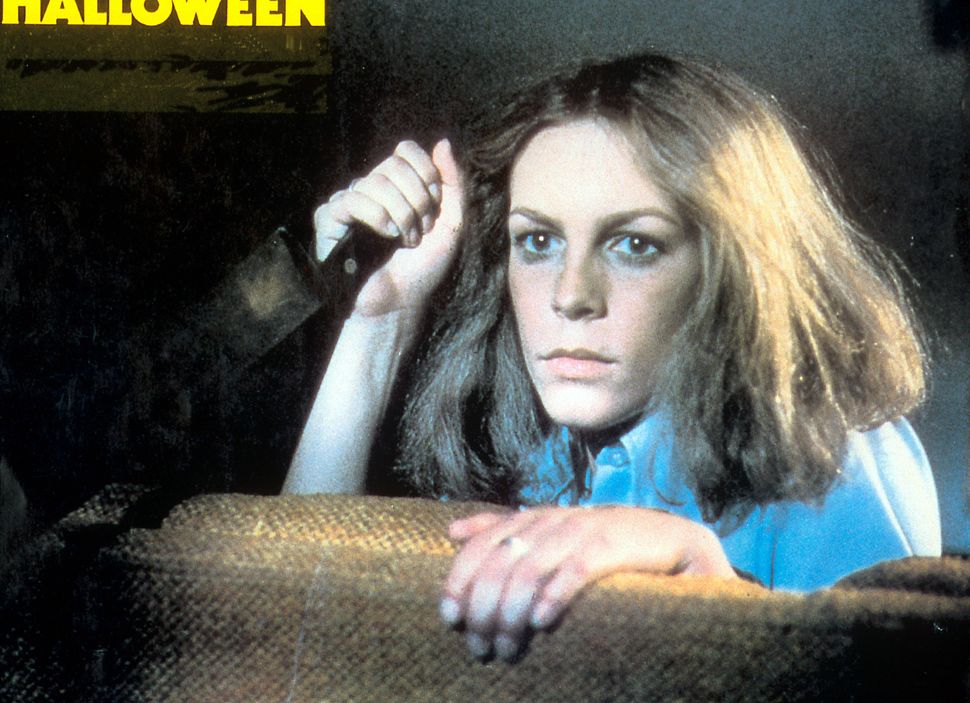
It seems like we’re turning the page on that. Part of the mystique of “Get Out” was its being made by Jordan Peele, a sketch-comedy artist.
Yeah, but I also think a lot of directors that would have at one point rolled their eyes at horror movies are seeing it as a way to engage that audience. And if that conversation between a director and his audience is important, which it is to me, it’s a fun way to say, “People are going to the theater for this.”
It’s also the only genre other than superheroes that consistently performs well at the box office today.
Yeah, but with a twentieth of the price tag. I think that’s one of the beauties of it: You can risk artful intentions. There’s so much freedom in a horror movie because the agenda is just to scare people, and you can get to that a number of ways, intellectually or biologically. But you don’t have to follow the same narrative rules, and you can get a little abstract. I have a few random scenes in there that almost make no sense, but they just feel right. It’s a cool way for makeup and effects artists that are elevating their work, and for writers that are able to inject subversive material. “Get Out” is the perfect example.
It’ll be interesting with this one, too, because there is an established fan base, but there’s all sorts of different camps within the fan base of the “Halloween” franchise. I’ve already heard from a number of my friends who can’t imagine how or why I wouldn’t want to include “Halloween 4” in our mythology.
So you get that email and your legs are shaking. There were scripts already written, yes?
There were some, but I didn’t read any of them. When you finish a movie, the Writers Guild sends you a letter, and there were eight people on it. I was like, “I’ve never heard of any of these people.” This is technically “Halloween 11,” so when I submit it to the Writers Guild, I’m submitting the “Halloween 11” screenplay. And there are eight or nine other people who’ve written “Halloween 11” before, of which me, Danny and Jeff are among. I’d never read them. I’m sure they’re nice guys. They had a take, and this is our take. So then I have to go plead my case so I’m not sharing the credit with all these people.
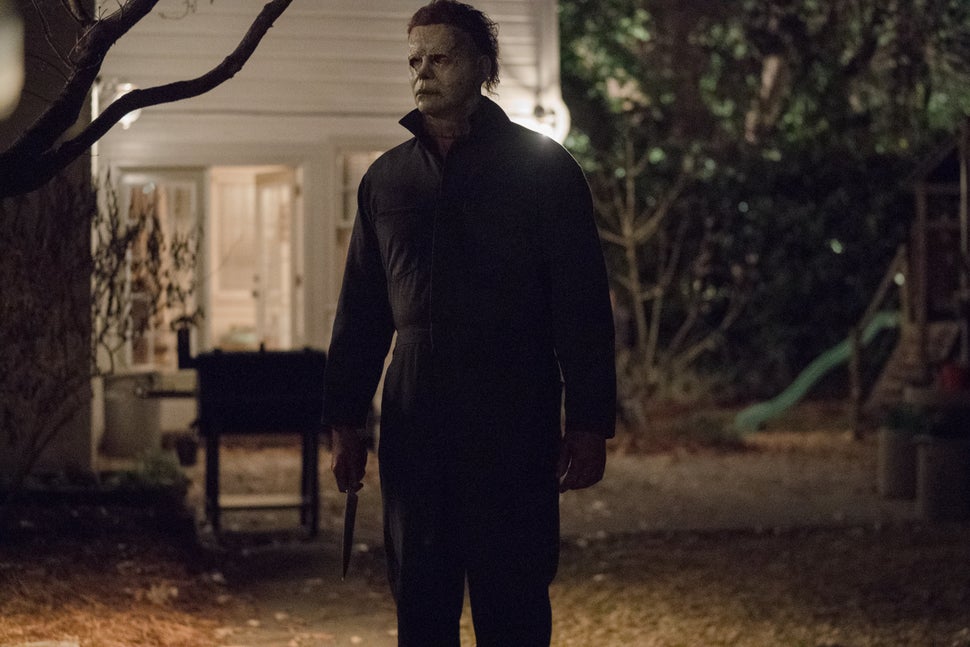
How do you even start to write a “Halloween” movie? What’s the first thing you do?
I had a conversation with Jason, and he stirred it all up and made my brain go crazy with excitement. I go to my office, where I have a company with Danny. He was living in LA at the time, and I just told him about the phone call I had with Jason. We just started going bananas with ideas. Danny was like, “You know I have to write this with you.” Danny and I went to college together, and we lived a couple doors down from each other in the dorms, so we had that vernacular and watched horror movies together. We’ve written a lot of stuff together, so we went in and talked to Jason and laid out a concept.
The unique thing about [Jason Blum’s production company] Blumhouse is that all of their executives and staff that I’ve met are really smart and nice and have kickass ideas. You get into the room, and it evolves with enthusiasm, rather than “You can’t do this” and “You shouldn’t do that.” It evolves in a very charismatic, productive and empowering way. They’re all really educated and passionate about making good movies, not commercial movies.
Had you met John Carpenter previously?
No. So then we sculpt our ideas, Danny and myself ― and we brought on a co-writer who’s a big genre fan that we went to college with, Jeff Fradley, who works on “Eastbound & Down” and “Vice Principals” with us. The three of us came up with this pitch, went with Jason over to John Carpenter’s house and told him the concept. The concept from our first meeting included him, like, “You’re part of this team, you’re part of this conversation, you’re part of the collaboration. We’re not making it without you, so let’s join hands and make a ‘Halloween’ movie.”
He’s handed off his original baby to a number of directors, so I guess it’s not that unlikely for him to trust you.
Yeah, and I don’t know how much he actually controls, but for me it was important that he control it. It’s a property and a franchise that’s gone beyond him. He claims not to have even seen them all, but to me he’s the author and the godfather. It felt to me weird to not embrace him on the journey.
At what point did you officially decide to discount the sequels?
It’s hard to say because for a while we entertained the second one. We were writing it and we were going to embrace “Halloween 1” and “2,” and then we bailed on it. I don’t remember what talked us out of it, other than it became clear to us that it wasn’t scary if [Michael was chasing] a sibling. If it was a sibling, then he had to have some sort of diagnostic connection to some person. We were looking for a free-for-all horror-fest. Anybody’s a victim. This is any town in America. He doesn’t have an agenda.
So Laurie is not his sister?
She’s not his sister. So then we just backed up and said, “We’re ‘Halloween 1,’ the end.” And now we’re the second part of “Halloween 1.” It sounds more complicated than it is. It’s dealt with pretty simply and then handed off at the beginning so that you just check that box and then you go.
Here we are having this conversation about all the mythology you dropped, and the one thing I don’t even count as mythology is Laurie being Michael’s sister. I’ve just internalized that as essential to the franchise, even though it isn’t in the first movie. Maybe it’s because I have a soft spot for the ridiculousness of “Halloween: Resurrection.”
[Laughs] Good for you.
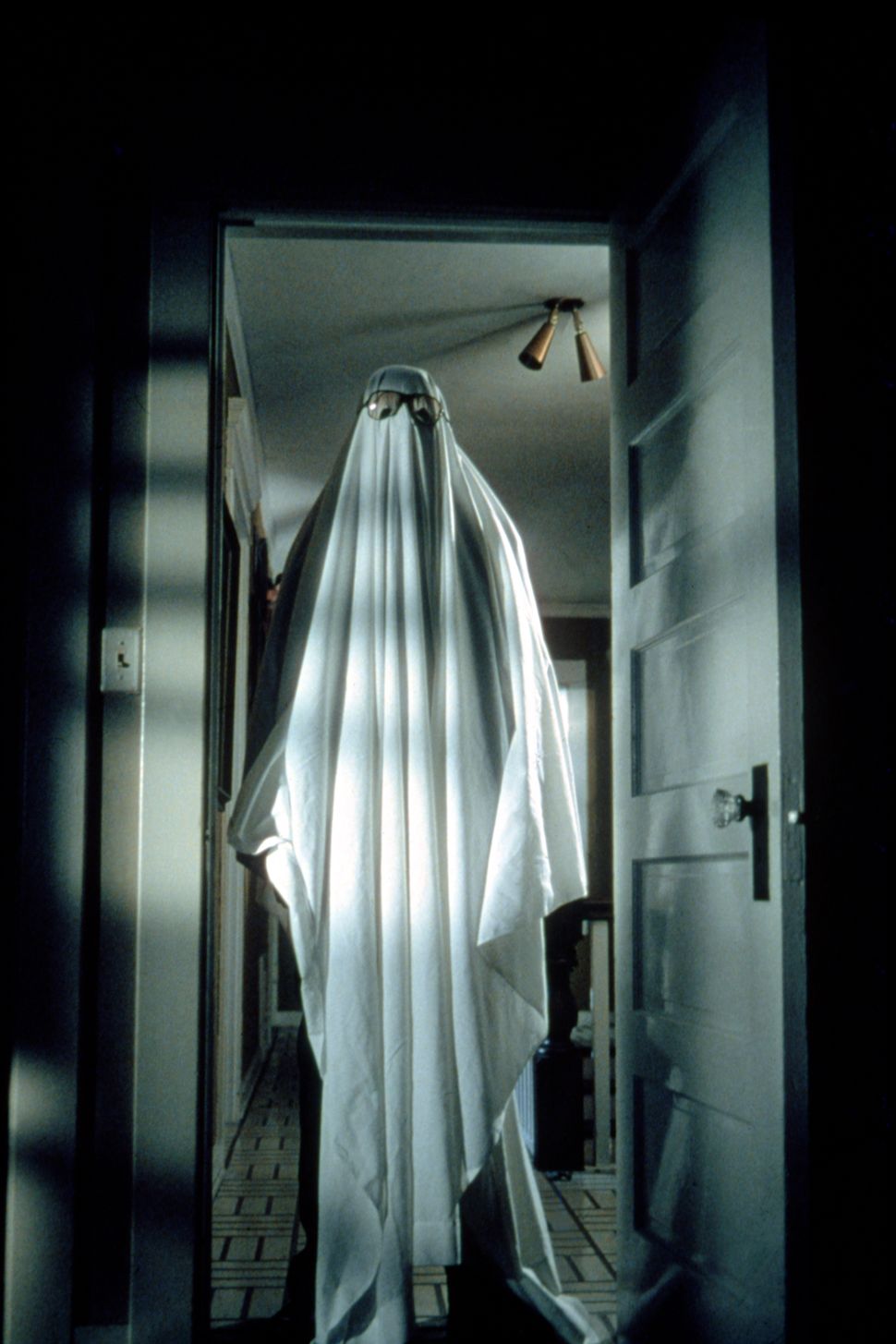
Where did you want to go with the pathology of Michael? The first “Halloween” can be read as a critique of the insanity industrial complex. In a way, it’s the story of a young boy who was locked away at any impressionable age and medicated instead of rehabilitated.
We intentionally don’t go into any real discussion of him or exploration of his character. There’s no backstory. He’s just standing there and then he does bad stuff. So it’s a non-answer, but we chose to go the path of “there is no justification, there is no childhood abuse, there’s no arc.”
In a way, he’s a strange character to write for because he gives you nothing. The mask, in different lighting scenarios, or in lingering for a different frame or two in the editing room, is a different character. A little tilt to the head says as much as he’ll ever say. He’s like, “I’m interested in what’s happening right now.” It’s like a cat — just little observations. So in terms of his life in the institution, he’s saying nothing and he’s standing there. He observes things. But he wasn’t in a food fight at the lunch table. We always had fun just picturing Michael Myers going through the buffet, looking at what he wants to eat at lunch while he’s carrying his tray.
You wonder, does he take his mask off to eat? In the first “Halloween,” there’s a long stretch between Michael escaping from the institution and almost killing Laurie at the end. You have to ask, “Is he eating anything? How is he alive?”
Right. He’s driving a car.
That too. How did he learn how to drive?
It’s amazing.
But at soon as we start picking apart the psychology, I remember that “Texas Chain Saw” is better off for not explaining anything about the remote, rural cannibal family.
I love the mystery. The stuff I used to love to watch is “Unsolved Mysteries” ― the reenactments and not knowing what’s happening and your imagination wondering whether there was a disappearance or a kidnapping or a crime with no answer. I was always really fascinated by books like In Cold Blood. I don’t know why people do the things they do, true-crime things where you don’t understand the mindset. I think once you start to explain the psychopaths, that’s a David Fincher journey. I think “Zodiac” is probably his scariest one, and we don’t know anything.
That’s kind of what we are: Let’s just not know anything. Maybe there’s a theory from a nosy journalist, but that’s about all we get. My theory is the audience puts together the mythology in their own head. We all talk about what’s real and how did he get there in the car. I think those are fun, and they give you problems as a writer: OK, he needs to be in a mechanic’s suit, so we’ve got to meet him in an institution and get him in a mechanic’s suit. There’s only so many ways we can do that. And he has to get the mask back, and then we can have a “Halloween” movie. You don’t have a “Halloween” movie unless he’s got a mechanic’s suit and a mask.
For a brief second in the original, we see Michael Myers’ face. Did that scene inform anything about his appearance?
Not really. We have Nick Castle [who played Michael in 1978] back for some key moments, and some breathing. And we’ve got stuntmen. We had this guy James Courtney that did a lot of the work, and then some specialty players that can take some falls and sit up at 90-degree angles. Things like that.
Is that a special talent?
Try it! Try falling down the stairs and then sitting up straight.
OK, sure. Fair.
You can’t use your arms!
But the camera’s trying not to see a lot of Michael, because the second you linger on someone’s face, you’re seeing their emotions, their reactions, you’re seeing them listen. There’s just too much going on within eyeballs, so our camera is always hiding from Michael’s eyeballs. In the original film, Carpenter talks about the “darkest eyes” and things like that. We don’t want to see into the humanity that any human would possess. We want to dehumanize him, put the camera in the back of his head, put it in shadow or soft focus. There’s scenes where we’ll see Jim Courtney as The Shape, but never lingering. It’s not a moment when the camera is there waiting for him.
Did you always know that Laurie would return to the story?
Yeah, but we never thought that Jamie Lee Curtis would want to do it. Maybe that was just based on the fact that her Laurie had died, and she’s notoriously not wanting to go back there — or at least that was my misconception at the time.
We were thinking maybe this would be like “Batman Begins,” where we’d sculpt it with new actors. Then the more we started writing it, we were writing it in Laurie’s voice 40 years later, and we were unconsciously acknowledging things that character said. “Do as I say,” she says to Tommy at the end of the movie. We started having all these Laurie-isms throughout the movie, and I remember it was a call from Blumhouse: “I’ve just been thinking about it. We shouldn’t dismiss the idea of going to Jamie with this. We shouldn’t expect her to say no. Let’s expect her to say yes and give her a call.”
It was cool because I was wrapping up “Stronger,” and Jake Gyllenhaal, the actor in that film, was very close with her because he grew up knowing her. He put in a call to her to describe working with me, for the good, bad and ugly that it is. And then she called me. I sent her the script, and the next day she said, “Let’s do it.”
Was the alternative to cast somebody else, rather than write out the character?
Yeah, that’s what I mean with the “Batman Begins” version. Do you take it as mythology, like how we’ve evolved with Wolf Man stories and Frankenstein stories, and put new people in it, like Rob Zombie did? He went in his direction, and we’d go in ours. But it wasn’t writing itself like that. It was writing itself like Jamie Lee. I’m not sure we would have made it if she hadn’t accepted the part because it would have been confusing to us. If she hadn’t been enthusiastic, we would have just said, “Hey, we’ll do a reduced role” or “We’ll kill you off in the first act.” Whatever we’d need to do. But she was game.
You could recreate the “Halloween: Resurrection” opening.
Exactly, throw her off a building. But she was great and liked the idea. She was amazing on set: 45 minutes to work early every day, and ready to work.
Had you batted around names of who might play Laurie if Jamie Lee said no?
Yeah, but they were all imposters.
But who are they?
It’s a tricky one because there are some great actresses of that age, but you keep going back to her. There’s an obvious list, but nobody that would have rung your bell.
Is it true that you guys considered filming a sequel immediately after wrapping this one?
Yeah, I wonder how that got out. We thought, “Wouldn’t it be ballsy if we did two at the same time and went for it?” I think I was the one who put the kibosh on that, thinking, “God, wouldn’t it suck if the first one’s terrible and I have to wait another year for the second to come out?”
It would have made economic sense because you have your locations, you have your cast. This is a low-budget movie. It’s a neighborhood, a house, a knife and a dude with a $5 mask.
To what did degree did you recreate the Haddonfield set as we once knew it?
It’s Haddonfield, and there are some specific recreations, like Laurie’s classroom, which is now her granddaughter’s classroom. There are things that are identical, but for the most part it’s a deteriorated version. Haddonfield, Illinois, in “Halloween 1” was shot in Pasadena, California; now we’re in Charleston, South Carolina. There are a lot more cracks in the sidewalk, a lot more deterioration. It was all practical locations other than a basement we built in a garage.
If you were ready to blaze through a sequel, I assume that means you had a solid idea for one?
Yeah, and to be honest, we just put them all into one movie.
And you’ll decide if you want to make another one when the time comes?
Yeah, people are already like, “Hey, couldn’t you do this and do that and spin over there?”
People at Blumhouse are saying that?
My crew. A lot of my crew are people I went to film school with. We have a very nerdy group of friends. A lot of us now live in Charleston, South Carolina. We went to school in North Carolina, so it’s a strong merging of these voices. We socialize with the people we work with a lot. My life is a tax write-off, basically. If you’re shooting the breeze with your friend on the beach, it’s the guy you worked on “Halloween” with. If you’re having a playdate with your kids and you’re jumping in the pool, it’s with the guy you’re working on “Halloween” with.
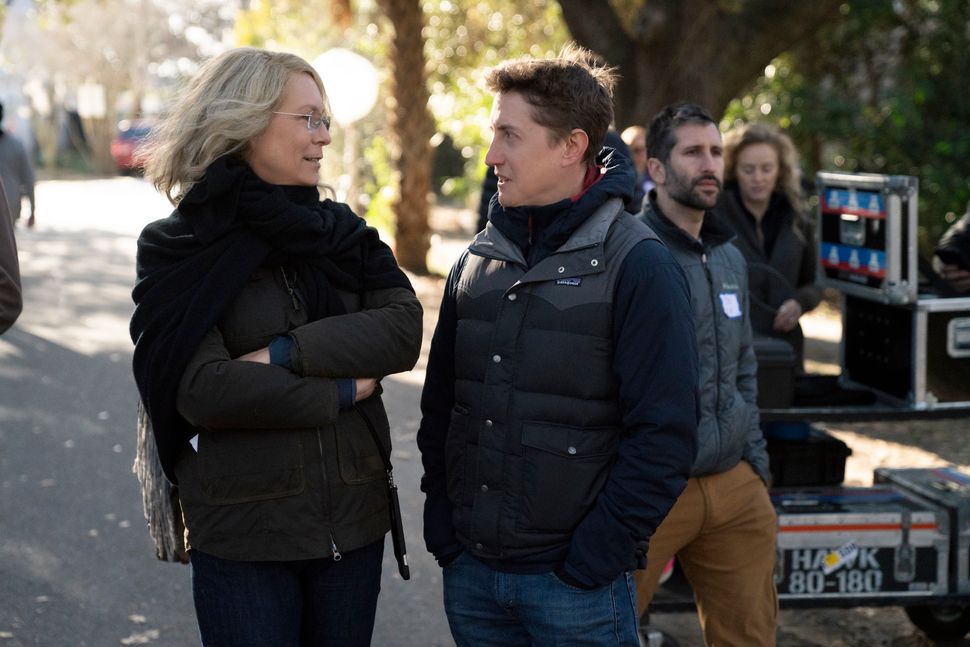
Did you see the documentary “78/52” last year?
No, what is that?
You would love it. It’s great. It focuses entirely on the shower scene in “Psycho,” explored from different critical and technical contexts. Fascinatingly, it shows the lengths Hitchcock went to to find the perfect sound effect for the knife stabbing Janet Leigh’s body, which I think is similar to what Carpenter did for “Halloween” by recording a knife plunging into a watermelon. It seems very analog. Are your sound effects as scrappy as stabbing fruit dozens of different ways?
It’s always weird like that. I don’t get into those literal sounds until next week, for the stabbings. But Jamie Lee Curtis does the sound of a baby crying, which is super weird. She has this weird way that she cries like a baby.
So you put her in a recording studio and then dubbed in her baby cry?
Yeah, there’s a baby crying in a scene. She sounds just like a baby crying.
But I see what you’re going for with the watermelon thing. That specific one I haven’t gotten to yet. I know there are some weird ones. We have a stock stab [sound effect] for that, and then we’ll do something unique on the foley stage.
So it’s not created digitally?
No. For a hallway of kids, we have a room on a dub stage and we have 30 people run around the room and we record their feet. Everything is unique, unless every now and then there’s some sort of stock sound effect that I get attached to. It’ll be watermelons and steaks.
It’s nice to know we haven’t graduated from the Hitchcock school too drastically.
We’ve got a shot close up on a stab through the neck. It’s a money shot in the movie. That’s going to be a very specific sound; I just don’t know how we’re achieving it yet. That’ll be a good one. It has to be.
Did you recapture Carpenter’s famous perspective shots, where the camera acts as Michael’s eyes?
We’re actually using one of them. Well, I shouldn’t say that. But yeah, we do a number of POVs and floating-camera shots. And we do some things that play games within that. We have some long, fluid shots that are Michael’s subjective perspective and then he walks into it. We’re acknowledging it and then adding our spin on it.
What is the conceit or the subplot you had the toughest time letting go of while developing the movie?
None, we used ’em all. All the good ideas, we just do it. Well, for example, we had some ending ambitions we couldn’t do. We couldn’t afford them. It was a 25-day production; that’s not much. “Joe” was 31 days. I had 25 days to make a movie, so inevitably you’re not achieving all of your ideas. Things you wish you had access and ability to do you can’t necessarily afford. So there’s that stuff, but you get over it.
Did you have a grander finale in mind?
I did at some point, and then we were able to address it. So we have the grand finale.
What do you expect the reception to the movie to be?
I have no idea. No idea.
Is that because it’s such a beloved property?
Well, I feel confident the movie works. I show it all the time to groups of people, from five to 50 to 300. I’ll grab people and put ’em in a room. I know the movie works on a technical level to make me happy.
There’s a lot of very vocal people who have strong opinions about this particular mythology. I can’t control their tastes or their interest in this character, or their opinions of my craft. That’s where I get nervous. I’m very confident in the movie at this point. With every movie, I show it a lot to get a feel for how it works with an audience. Do I need comic relief? Do I need surprise, or do I need suspense? That conversation is really important. The movie evolves, and I re-trim the edit, or I show producers and say, “We need a little bump in our cash because I learned this from an audience, so let’s try to do this.” It’s all a moving organism.
Now I’m basically on the eve of unleashing this movie to a crowd in Toronto that will be made up of some people who have never seen the original film. Do they understand it? Do they care? Have I created a world where they don’t need the original film for this to exist on its own? That’s challenging. Have I created something where fans of Carpenter and the original film get my respect and my attempts to honor his movie, and do they feel like I’ve done that justice? That’s very important to me. And then are there fans that want to see Michael Myers do a bunch of shit that he’s not doing in this movie because those are not the choices I made.
It’s so out of your control. I’m not a social media person myself, but we’re in a world where word travels fast. You get all these different arenas of opinions that are going to flood out after that experience, which is a month before the movie comes out [on Oct. 19]. It’s scary as shit. But at the same time, I’m excited to do it. I’ve been to Toronto with the last four movies in a row, maybe more. It’s a great audience. I love the festival. I’m really proud of the movie. That’s why we’re doing this, because we’ve got balls to do it. It’ll speak for itself.
Is it fair to say you’ve never had an experience like this in your career, where you’ve made something so anticipated and scrutinized?
Never.
And an experience where you’ll have to answer for it, I guess.
Maybe. Do I? I think the movie’s the answer. I’m really happy with the fact that this movie is coming out at a time when I think Jamie Lee has a really strong voice in culture, and a lot of great things to say about why this movie is relevant now as opposed to three years ago or three years from now.
She’s spoken about Laurie taking back her narrative as a victim.
Yeah! It’s great. These are things that weren’t woven into our intention with the film consciously, but in terms of timing, they’ve landed at a great time. I think I’ve quietly made a very feminist horror movie. I mean, it’s three female leads kicking ass and getting rocked [including Judy Greer and Andi Matichak], so maybe timing works in my favor on this one.
This interview has been edited and condensed for clarity.